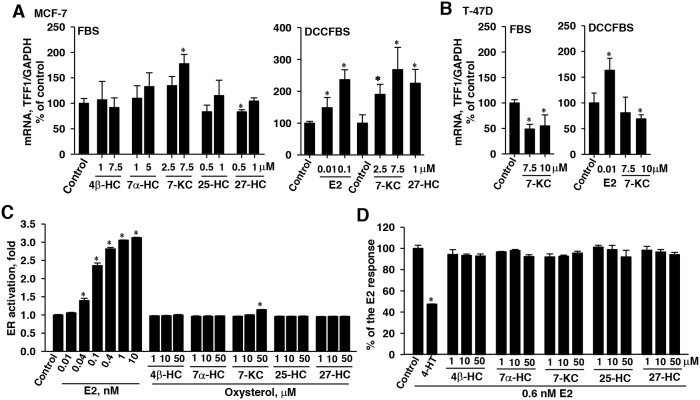Figure 6.
Effects of 7-ketocholesterol (7-KC) and hydroxycholesterols (HCs) on mRNA levels of the ERα target TFF1 gene in MCF-7 (A) and T-47D (B) cells and the estrogen receptor (ER) agonistic (C) and antagonistic (D) effects of oxysterols in a yeast reporter assay system. Breast cancer cell lines were cultured in a medium supplemented with either FBS or DCCFBS. Cells were exposed to 7-KC and HCs for 48 h and the induction of TFF1 by 48-h exposure to estradiol (E2) in DCCFBS-supplemented medium was performed as the positive control. The results show the mRNA levels of TFF1 normalized to glyceraldehyde 3-phosphate dehydrogenase (GAPDH) mRNA. The results are presented as means ± SD of three independent experiments with two determinations in each experiments. *p < 0.05, compared to the vehicle control. In panels (C) and (D), the ER activation by oxysterols was assayed in a yeast system transfected with a LacZ reporter construct carrying the response element for ER complex (YES assay). Yeast cultures were exposed to estradiol (E2) and oxysterols for 72 h. The results are presented as means ± SD of three separate determinations. The antagonistic effects of 4-hydroxytamoxifen (4-HT) and oxysterols (72 h) on the E2-stimulated ER activation were determined using 0.6 nM E2 in the YES assay. The results are presented as means ± SD of three separate determinations. *p < 0.05, compared to the vehicle control.

